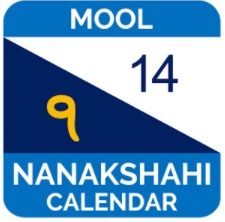Haven’t people have used the Bikrami Calendar since the inception of Sikhism?
ਰਥੁ ਫਿਰੈ ਛਾਇਆ ਧਨ ਤਾਕੈ ਟੀਡੁ ਲਵੈ ਮੰਝਿ ਬਾਰੇ ॥ ਪੰ: 1108
This refers to the date when the day is longest in the year, and usually the hottest, when the northern declination of the sun is maximum , when the sun changes its course from northerly to southerly direction (see Faridkoti Teeka, Bhai Kahn Singh Nabha- Mahan Kosh, or Sampardaee Teeka of Sant Kirpal Singh). This phenomenon occurred on the Sawan Sangrand at the time of beginning of Siddhantic astronomy. Because of the shift of the Sangrands due to the precession of the equinoxes, it occurred about 15th Asarh at the time of Guru Nanak Sahib, and around 13th Asarh in the first decade of the 18th Century, and occurs around 9th Asarh during the present times. This will shift to the close of Jeth in another 600 years. Here it does not matter whether it is Australia or India, it will occur in Jeth, contrary to its mention in the month of Asarh. Unlike Bikrami calendar, Nanakshahi calendar is based on the tropical length of the year, therefore no further shift will occur and it will always occur in the month of Asarh.
In 6500 years Asarh will move into mid-September. In September, it is autumn in the Northern hemisphere, and spring in the southern hemisphere (Australia included). My request is to understand the problem with the Bikrami calendar and not to offer far-fetched explanations.
The names of the month of the Nanakshahi calendar are the same as given in Barahmahas, except that their popular variants are used. We read Gurbani, and we want our children to read and understand Gurbani. We have to tell them about calendars as well, when explaining Gurbani Barahmahas.
On the beginning month of the Nanakshahi Calendar, I just want to reiterate that in the calendar we cannot have Chet as the twelfth month, when it is the first month in both the Barahmahas, and Ruti Slok Banis.
